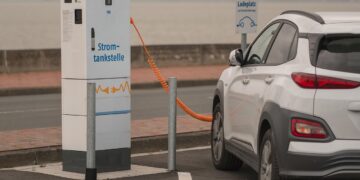Integrating Green Technology: The Future of Smart Homes and Sustainability
In the evolution of modern living, the integration of green technology in home automation systems marks a significant stride towards environmental stewardship and sustainable living. Smart homes, once considered a luxury, are rapidly becoming accessible and essential for those seeking to reduce their ecological footprint while enhancing lifestyle convenience and reducing energy costs.
Understanding Green Technology in Smart Homes
Green technology in the realm of smart homes refers to the use of energy-efficient systems, renewable energy sources, and environmentally friendly materials that enhance the home’s operational efficiency. This technology plays a crucial role in minimizing the overall environmental impact of residential buildings while promoting eco-friendly living habits.
The Role of Energy-Efficient Systems
Energy-efficient systems such as LED lighting, programmable thermostats, and energy-saving appliances are the cornerstone of green smart homes. These systems not only consume less energy but also drastically reduce utility bills and help in conserving natural resources.
Incorporating Renewable Energy
The use of renewable energy technologies like solar panels and wind turbines has become increasingly popular in smart home setups. These systems allow homeowners to generate their own clean energy, which can drastically reduce dependence on fossil fuels and decrease greenhouse gas emissions.
Key Benefits of Smart Green Homes
The benefits of integrating green technology into smart homes extend beyond environmental impacts. They also offer significant savings, improved home value, and enhanced quality of life.
Cost Savings
Smart homes equipped with green technologies can lead to significant energy savings. Smart thermostats and intelligent lighting systems ensure that energy usage is optimized, effectively cutting down on expenses in the long run.
Increased Property Value
Homes with integrated green technologies often enjoy a higher market value. Prospective homebuyers are increasingly looking for properties that offer sustainability and decreased utility costs, making smart green homes a lucrative investment.
Enhanced Comfort and Convenience
Smart green homes provide a more comfortable living environment. Automated systems like climate control and advanced air filtration improve indoor air quality and thermal comfort.
Integrating Green Technology: Practical Steps
Homeowners interested in upgrading to a smart green home may consider the following practical steps for effective integration of green technology:
1. Energy Audit
Conducting a home energy audit is the first step to understanding how energy is used in your home. This assessment can help identify areas for improvement and determine the most effective upgrades for enhancing energy efficiency.
2. Implementing Smart Energy Solutions
Investments in smart thermostats, energy-efficient appliances, and IoT-enabled lighting systems are practical starting points. These systems can be remotely controlled and programmed to minimize energy wastage.
3. Renewable Energy Installations
Installing solar panels or small wind turbines can provide homeowners with a source of clean energy while also upping their home’s green credentials.
Overcoming Challenges in Adoption
Despite the advantages, some homeowners may face challenges such as high initial costs, integration complexities, and lack of information. Overcoming these challenges often requires:
1. Seeking Expert Advice
Consulting with professionals who specialize in green technologies can provide insights into the most cost-effective strategies and products tailored to one’s specific needs.
2. Leveraging Government Incentives
Many governments offer incentives for green technology adoption, such as tax breaks or subsidies, which can significantly offset initial installation costs.
3. Staying Informed
Keeping up with the latest developments in green technology can help homeowners make informed decisions and take advantage of emerging innovations that may be more efficient and affordable.
Conclusion
The movement towards integrating green technology within smart homes illustrates a growing consumer commitment to sustainability and innovation. By embracing smart green technologies, homeowners can enjoy lower utility costs, enhanced comfort, and the satisfaction of contributing to a healthier planet. As more individuals recognize the benefits and feasibility of transforming their residences into eco-friendly smart homes, we step closer to a sustainable future where smart living becomes standard.
Additional Resources
For those interested in learning more about smart homes and sustainability, several online resources and local workshops can offer valuable information and support. Engaging in community forums and attending relevant webinars can also provide insights and ideas for effective green technology integration in your home.










